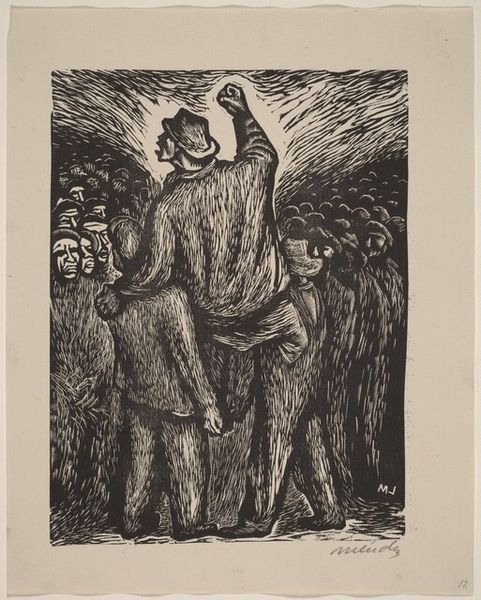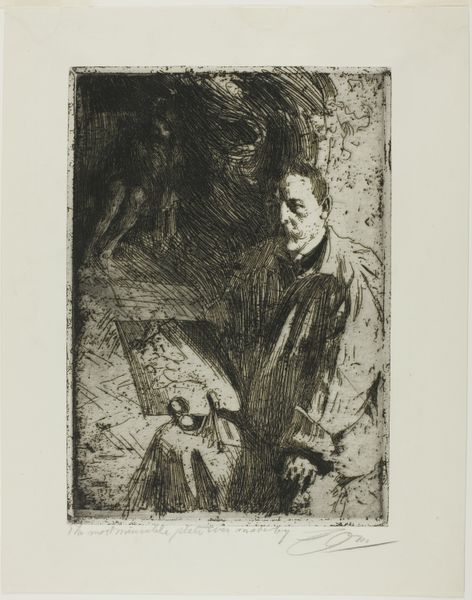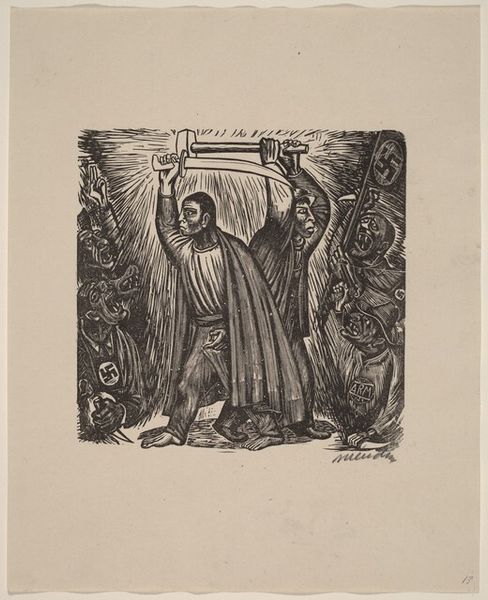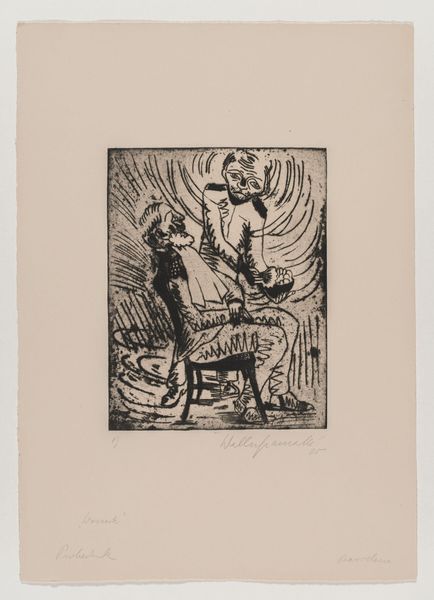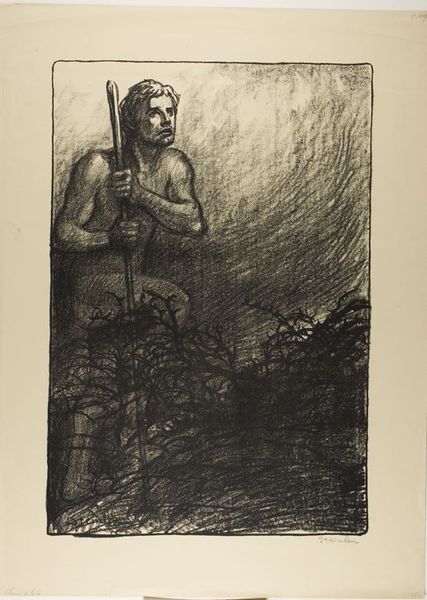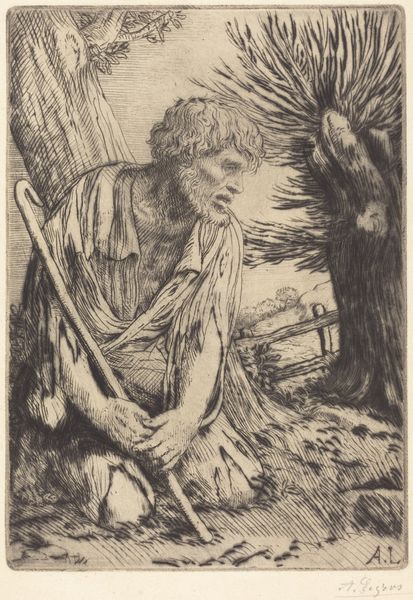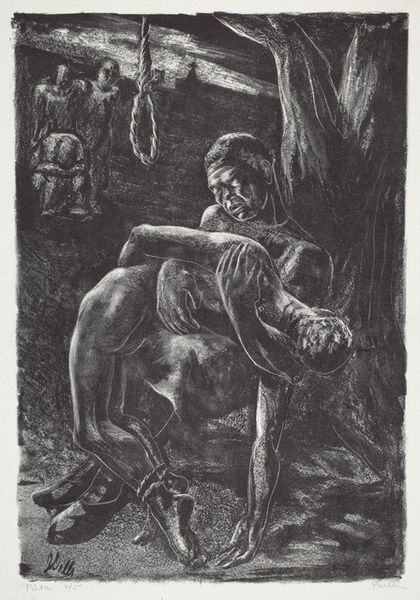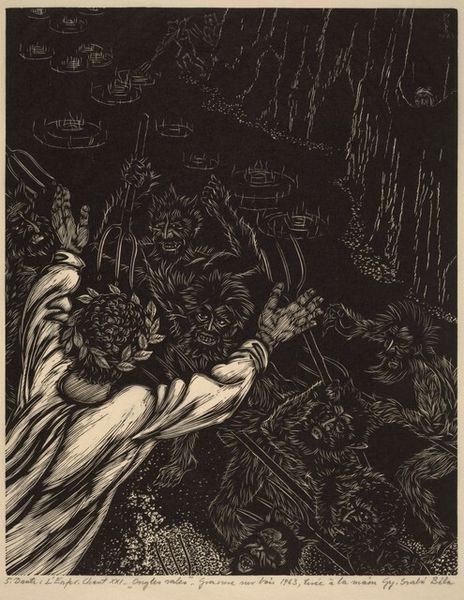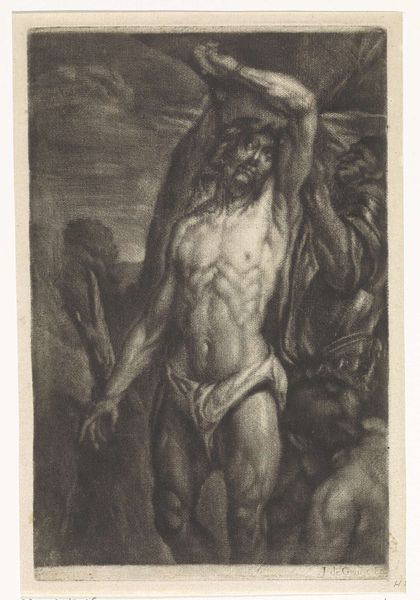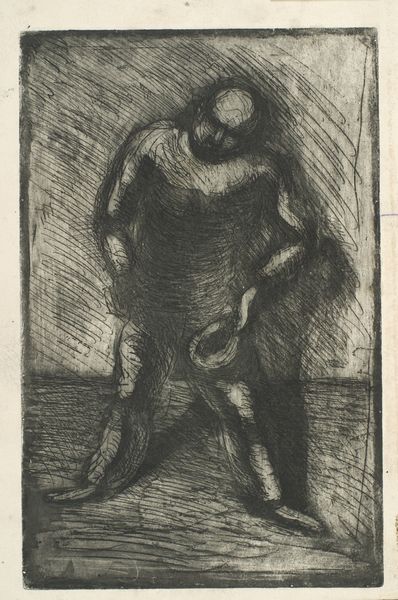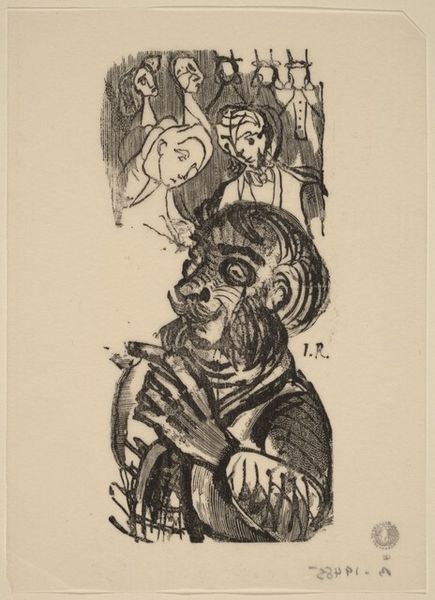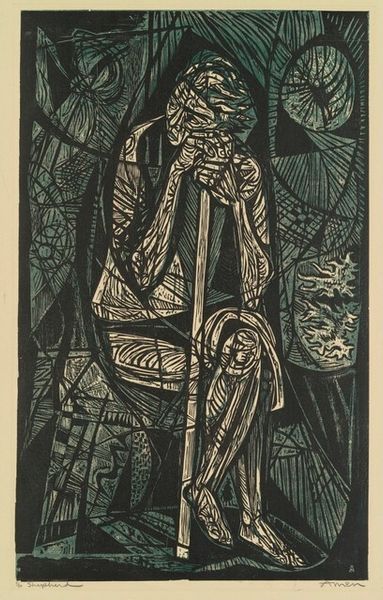
print, woodcut
#
narrative-art
# print
#
figuration
#
social-realism
#
woodcut
#
mexican-muralism
#
history-painting
Copyright: National Gallery of Art: CC0 1.0
Curator: Let’s turn our attention to Leopoldo Méndez’s woodcut, "Protest," created in 1943. What strikes you upon seeing this image? Editor: It has a potent, raw energy. The stark contrast between light and shadow really amplifies the emotion. There's a sense of contained fury ready to explode. Curator: Indeed. The composition relies heavily on chiaroscuro, doesn’t it? Méndez uses this stark contrast to define form and create drama. The diagonal lines in the background add a sense of instability, contributing to the overall mood. The textures themselves are worth noting as well. Editor: I am especially drawn to that raised fist, a universal symbol for resistance, but there's more to it. Given the context of 1943, it’s easy to read it as an emblem against oppression, perhaps a call against the tyranny in Europe during the war. Curator: A plausible reading. One could analyze the symbol further through the ages. Méndez was deeply involved in social causes and graphic art to promote political awareness and the narrative aligns with history paintings across various cultures. We should consider how his art connects to that rich tradition. Editor: The surrounding figures contribute, they’re huddled and wretched, clearly a group that needs a voice to defend them. This print speaks directly to the plight of the disenfranchised and seeks justice, even when things looks so dire. The figures could represent those facing various oppressions globally, making the protest not just about one location, but the broader human condition. Curator: A universal interpretation is reasonable here, however the specifics of Méndez's line work are distinct. Look at how the texture creates both a sense of movement, and also reinforces a flattened perspective, making this a strong graphical piece and testament to his craft. Editor: In its simplicity, there is remarkable emotional depth, using recognizable figures and familiar settings to amplify its accessibility, thereby solidifying its purpose. Ultimately the artwork remains a timeless call for freedom and empathy. Curator: Agreed, it’s remarkable how Méndez merged technique with narrative to construct such a strong visual statement.
Comments
No comments
Be the first to comment and join the conversation on the ultimate creative platform.
